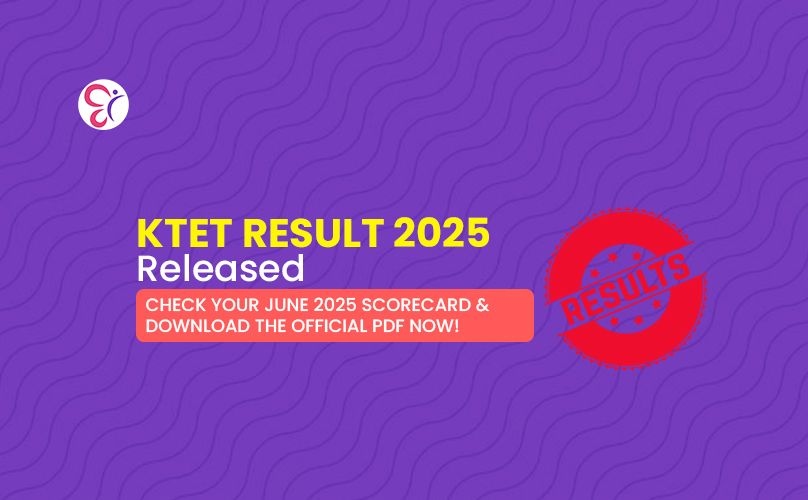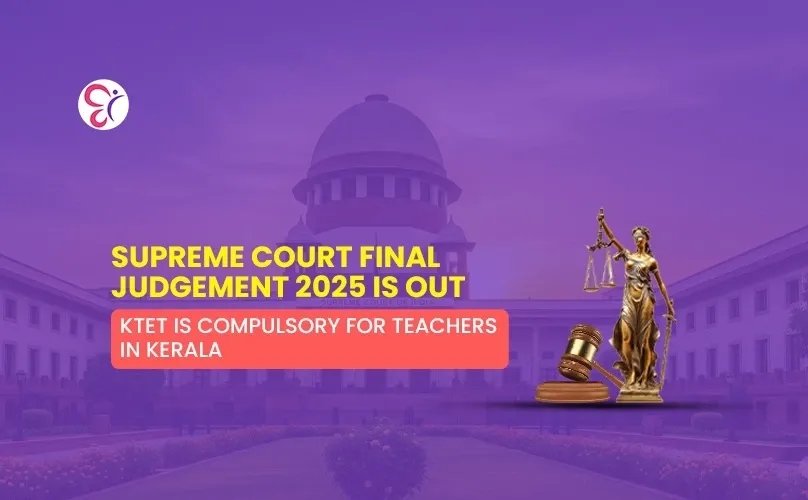HSA Physical Science Syllabus, Online Coaching

Table of Contents
HSA Physical Science Exam
HSA Physical Science Coaching
HSA Physical Science Syllabus
PSC Physical Science Previous Questions
Overview
Recruitment for HSA Physical Science conducted by Kerala PSC is expected to begin in 2025. In this district-wise exam process thousands of candidates across Kerala will be competing each other. To the candidates who are aspiring a safe career and secure income in government teaching posts must engage in a long preparation. Candidates surely need a systematic approach to cover the syllabus in its entirety. Many students who already working in private firm will find it difficult to attend offline classes. For such candidates and all other candidates, the most reliable online platforms such as Competitive Cracker is providing the best courses. The year-long batches dedicated for candidates preparing for HSA exam provides both live and recorded classes.
HSA Physical Science Exam
The notification for HSA Physical Science is expected to be released in December final week. The recruitment for the post will be declared in 2025. The recruitment process will include an examination OMR / online and an interview session. The exam will be conducted for 100 marks and interview session for 10 marks. All the eligible candidates must apply through the official website Kerala Public Service Commission Thulasi. The aspirants who haven’t registered or created in this website should do so immediately by uploading the required particulars, and adding the details of yourself and education qualifications. The notification to apply for the exam will appear in the district-wise recruitment link in notification tab. Candidates with sufficient qualification shall see ‘eligible’ clause. Others with equivalent qualification should apply by choosing so and must be able to prove the equivalency during document verification day. Choose the district of recruitment and district of exam centre.
Only candidates who clear the exam with a minimum mark, decided by Kerala PSC, will be invited for interview round of the recruitment. Combining the scores earned in both exam and interview PSC publishes the rank list. Candidates in this list will receive advice for appointment as per the rotation chart of Kerala PSC and vacancy reported by the concerned department.
HSA Physical Science Coaching
HSA Physical Science is one of the crucial recruitments by Kerala PSC in 2025. The opportunity is very important for the candidates for whom the exam is a last chance. With intense coaching for another year the candidates will be able to clear the cut off and achieve the dream job. Teaching job in government sector is both reputable and earn decent income. HSA Physical Science online coaching in reliable institutes such as Competitive Cracker will enhance your preparation multi-fold. The one-year Spark batches for HSA subjects allows you to learn from the industry best faculties. The meticulously prepared HSA Physical Science study material.
HSA Physical Science Syllabus
It is important that the candidates know the syllabus for upcoming HSA Physical Science exam. Find the latest HSA Physical Science Syllabus below and start your preparations from now on.
Module I
Particle dynamics-Newton's laws of motion, rotational dynamics, conservation laws- Linear momentum, angular momentum, energy. Simple harmonic motion, damped and forced oscillations, wave motion-progressive waves, super position of waves, Doppler effect. Frames of reference, special theory of relativity
Elasticity-Young's modulus, rigidity modulus, bulk modulus, surface tension, viscosity.
Module II
Electrostatics, transient current, current electricity, electromagnetic induction, alternating current, magnetic properties of materials.
Semiconductor physics- diodes, transistors, amplifiers, oscillators, logic gates.
Module III
Reflection, refraction, dispersion, interference, diffraction, scattering, polarization, fibre optics, lasers, basic idea of spectroscopy.
Heat and thermodynamics-conduction, convection, radiation, laws of thermodynamics, Carnot engine, entropy.
Statistical distribution-ensemble, phase space, Maxwell-Boltzmann statistics.
Module IV
Bohr atom model, vector atom model, hydrogen spectra, nuclear structure and properties, radio activity, nuclear fission and fusion, elementary particles.
Crystal structure, crystal symmetry, miller indices, brevais lattice, Bragg's law, packing fraction, super conductivity.
Wave nature of matter, uncertainty principle, postulates of wave mechanics, Schrodinger equation.
Module V
Eigen functions and Eigen values -Postulates of quantum mechanics Time Schrödinger wave equation Application to particle in a one dimensional box Normalization of wave functions Application of Schrödinger wave equation to hydrogen atom Conversion of cartesian coordinates to polar coordinates Radial and angular functions (mention only) Orbitals and concept of Quantum numbers
Energy levels in molecules Born-Oppenheimer approximation. Rotational, vibrational, Raman, Electronic and NMR spectroscopy: Basic Principles and applications. Elements of symmetry of molecules
Amorphous and crystalline solids Defects in crystals Stoichiometric and non stoichiometric defects. Ideal and non ideal solutions -Henry's law, Raoult's law - Dilute solutions - Colligative properties - Abnormal molecular mass - Van't Hoff factor.
Solubility product and common ion effect, precipitation of cations, Principles of volumetric analysis, Theories of indicators.
Principles and applications of Column chromatography, Paper chromatography, Thin layer chromatography, lon exchange chromatography, Rf values.
Structure and applications of silicones, silicates and zeolites. Cement, Glass, Inorganic fertilizers, Rocket propellants (Brief study)
Types of pollution: Air and water. Pollutants, Control of air and water pollution
Module VI
Atom Models- Planck's quantum Theory - Photoelectric effect -de Broglie's relation - Dual nature of matter and radiation, Heisenberg's uncertainty principle. Atomic orbitals and Quantum numbers - Pauling's Exclusion principle - Hund's rule of maximum multiplicity Aufbau's principle - Electronic configuration of atoms.
Ionic bond - Properties - Born-Lande equation (derivation not expected) - Born-Haber cycle - Fajan's rules and its applications. Covalent bond Valence bond theory-VSEPR Theory - Concept of Hybridisation -Types: sp, sp², sp³, dsp², sp³d, d²sp³, sp³d² - Explanation with simple examples. Molecular Orbital Theory - LCAO - Bonding and anti bonding molecular orbitals Bond order. Theories of Metallic bonding: Free electron theory, valence bond theory and band theory (Basics concepts only). Hydrogen bond Intra and inter molecular hydrogen bond.
Periodic laws, Periodic properties Electronegativity scales (Pauling and Mullikan scales) Effective nuclear charge - Slater rule - Diagonal relationship Representative and Transition Elements General Characteristics, preparation and properties of simple compounds. Lanthanides and actinides
Metals: Occurrence, Concentration of ores, Refining of metals, Extractive metallurgy of Al, Fe, Ni, Cu and Ti-Classification of steel, hardening of steel.
Isomerism in coordination compounds - Werner's theory -EAN rule Valence bond theory - Crystal filed theory Splitting of d-orbitals in octahedral, tetrahedral and square planar complexes-Applications
Organometallic Compounds: Definition, Classification and Applications
Radioactivity-Natural and artificial, Nuclear stability- N/P ratio-Nuclear forces -Half life period Gieger Nuttal rule -Disintegration series Transmutation Nuclear fission and Nuclear fusion-Application of radioactive isotopes
Module VII
Postulates of kinetic theory of gases - Collision number. First law of thermodynamics Joule-Thomson effect Liquefaction of gases Inversion temperature. Second law of thermodynamics Concept of entropy Entropy as criteria of spontaneity. Free energy functions Hess's law, Bond energies. Third law of thermodynamics.
Law of mass action Law of chemical equilibrium Equilibrium constant in terms of concentration, partial pressure and mole fractions Van't Hoff's equation Homogeneous and heterogeneous equilibria - Le Chatelier's Principle and its applications.
Rate of a reaction Factors influencing the rate of a reaction Rate law Order and molecularity - Rate constants for first, second, third and zero order reactions - half life period for first order reaction- Arrhenius equation Collision theory Homogeneous and heterogenous catalysis - Enzyme catalysis Transition state theory
Photosynthesis - Simple Photochemical reactions-Fluorescence Phosphorescence
Chemisorption and physisorption Factors affecting adsorption Adsorption isotherms
Classification, Preparation, purification and properties of colloids, Protective colloids – Gold number Applications of colloids. Phase Equilibria: Components and degrees of freedom - One component and two component systems (Simple cases only)
Faraday's laws, Kohlrausch's law Arrhenius theory, Ostwald's dilution law Debye Huckel - Onsager's equations for strong electrolytes, Galvanic cells, electrochemical series - Nernst equation
Module VIII
Uniqueness of Carbon, Classification of organic compounds Hybridization of carbon in organic compounds. Structural and Stereoisomerism, Baeyer strain theory, Conformation and configuration - Specific rotation-Chirality. Enantiomers, Diastereomers- Racemic mixture- Resolution methods
Inductive effect, Mesomeric effect, Hyperconjugation and Electromeric effect Steric effect.
Organic reactions: Substitution, Addition, Elimination and Rearrangement. Mechanisms of SNI, SN2, E1 & E2
Nomenclature of organic compounds Preparation and properties of alkanes, alkenes. alkynes, alkyl halides, alcohols, aldehydes and ketones, carboxylic acids & their derivatives.
Aromaticity, Huckel's rule Structure and stability of benzene, Electrophilic substitution - reactions in benzene with mechanisms
Grignard reagent-Preparation and synthetic applications
Classification of polymers, preparation and applications of important polymers, biodegradable polymers
Biomolecules: Carbohydrates, proteins, nucleic acids, vitamins (Classifications with examples, applications/functions)
PSC Physical Science Previous Questions
- Identify the famous activist of "Kerala Mahila Deshasevika Sungh" who participated in the disobedient movement?
- Lalitha Prabhu
- Kowmudi Teacher
- Anna Chandi
- Kuttimaluamma
- According to learning is an active process in which learners construct new ideas based upon their current and past knowledge.
- Gardner
- Gagne
- Bruner
- Vygotsky
- 480 Hz, 482 Hz ഉള്ള രണ്ട് ട്യൂണിങ് ഫോർക്കുകൾ ഒരേ സമയത്ത് കമ്പനാവസ്ഥയിൽ ആയാൽ അവിടെ ഉണ്ടാകുന്ന ബീറ്റിന്റെ ആവൃത്തി എത്രയാണ്?
- 2
- 481
- 962
- 0
- ഒരു കപ്പാസിറ്ററിൽ കൂടി എ.സി. (a.c.) ഒഴുകുമ്പോൾ, കറന്റും വോൾട്ടേജും തമ്മിലുള്ള ഫേസ് വ്യത്യാസം :
- കറന്റ് വോൾട്ടേജിനേക്കാൾ 180° മുമ്പിൽ
- കറൻ്റ് വോൾട്ടേജിനേക്കാൾ 90° മുമ്പിൽ
- കറന്റ്റ് വോൾട്ടേജിനേക്കാൾ 90° പിന്നിൽ
- കുറൻ്റ് വോൾട്ടേജിനേക്കാൾ 180° പിന്നിൽ
- മാക്സ്വെൽ-ബോൾട്ട്സ് മാൻ ഡിസ്ട്രിബ്യൂഷനിൽ (Maxwell-Boltzmann Distribution), ഒരു ഐഡിയൽ ഗ്യാസ് തന്മാത്രയുടെ ആർ.എം.എസ്. സ്പീഡ്, ആവറേജ് സ്പീഡിൻ്റെ എത്ര ശതമാനം കൂടുതലായിരിക്കും?
- 3%
- 6%
- 9%
- 12%
- ഒരു സിമ്പിൾ ക്യുബിക് ലറ്റിസിൻ്റെ പാക്കിങ് ഫാക്ടർ (Packing Factor) എത്രയാണ്?
- 0.52
- 0.68
- 0.74
- 0.79
- ക്ലോറോഫോം സിൽവർ പൗഡറുമായി പ്രവർത്തിക്കുമ്പോൾ ഉണ്ടാവുന്ന വാതകം :
- അസറ്റലിൻ
- ഈഥേൻ
- മീഥേൻ
- എഥിലീൻ
- ഒരു ആറ്റോമിക് ഓർബിറ്റലിൽ ഉൾക്കൊള്ളിക്കാവുന്ന പരമാവധി ഇലക്ട്രോണുകളുടെ എണ്ണം രണ്ടായി നിജപ്പെടുത്തിയിരിക്കുന്ന നിയമം :
- പൗളിയുടെ തിരസ്കരണ നിയമം
- ആഡ്ബോ തത്വം
- ഹണ്ട് നിയമം
- ഇവയൊന്നുമല്ല
- 'ഗ്രിഗ്നാർഡ് റീ ഏജന്റ് ഒരു. ആണ്.
- ബേസ്
- ആസിഡ്
- ഇലക്ട്രോഫൈൽ
- ഇവയൊന്നുമല്ല
- സ്റ്റാർച്ചിനെ മാൾട്ടോസ് ആക്കി മാറ്റാൻ ഉപയോഗിക്കുന്ന എൻസൈം :
- മാൾട്ടോസ്
- ഡയസ്റ്റേസ്
- സൈമേസ്
- ഇൻവേർട്ടേസ്
|
Answer Key | |
|
Q. No. |
Ans. Code |
|
1 |
c |
|
2 |
a |
|
3 |
a |
|
4 |
b |
|
5 |
c |
|
6 |
a |
|
7 |
a |
|
8 |
a |
|
9 |
a |
|
10 |
b |
Get the HSA Physical Science Previous Question Papers with answers pdf from Competitive Cracker official website.
Trending Updates








